Figures & data
Table I. Demographic and clinical characteristics of the study population.
Table II. Demographic and clinical characteristics of the preterm study population.
Figure 1. Amniotic fluid thrombin-antithrombin III complexes concentration in patients in the mid-trimester of pregnancy and women at term not in labor (mid-trimester: median 8.1 μg/L, range 2.1–160.0 vs. term no labor: median 66.9 μg/L, range 10.2–154).
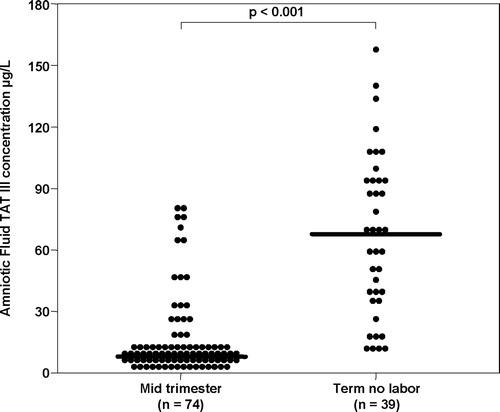
Figure 2. Amniotic fluid thrombin-antithrombin III complexes concentration in patients with term pregnancies not in labor, women at term in labor and patients with term labor and intra-amniotic infection/inflammation (term no labor: median 66.9 μg/L, range 10.2–154; term in labor: median 50.8 mg/L, range 6.8–150.0); term labor with IAI: median 118.5 μg/L, range 26.3–310.0.
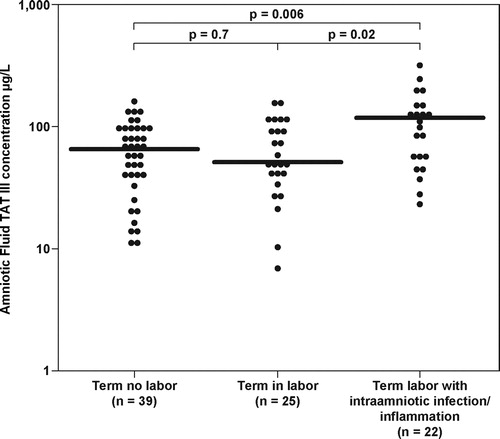
Figure 3. Amniotic fluid thrombin-antithrombin III complexes concentration in patients with preterm labor who delivered at term, women with preterm labor who delivered preterm without intra-amniotic infection/inflammation, and women with preterm labor and intra-amniotic infection/inflammation (PTL with IAI: median 147.7 μg/L, range 15.3–1424.8; PTL without IAI: median 116.0 μg/L, range 10.7–2073.9; PTL who delivered at term: median 73.4 μg/L, range 7.6–507.0).
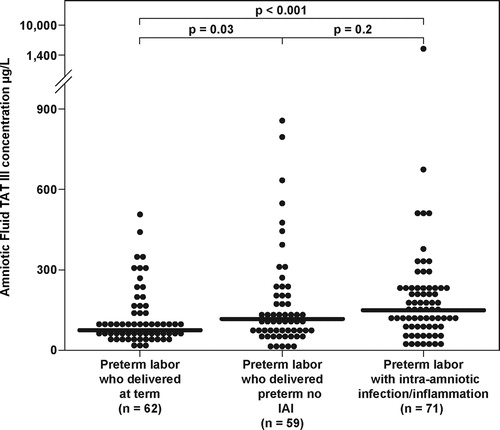
Figure 4. (a) The effect of an elevated amniotic fluid thrombin–antithrombin III complexes concentration on gestational age at delivery in patients with preterm labor. (b) The effect of an elevated amniotic fluid thrombin–antithrombin III complexes concentration on the amniocentesis-to-delivery interval in patients with preterm labor.
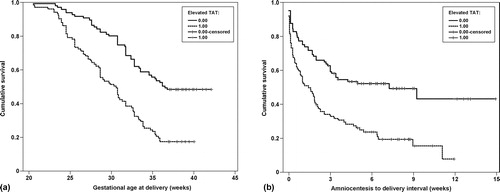
Figure 5. (a) The effect of an elevated amniotic fluid thrombin–antithrombin III complexes concentration on gestational age at delivery, among patients with preterm labor without intra-amniotic infection/inflammation. (b) The effect of an elevated amniotic fluid thrombin–antithrombin III complexes concentration on the amniocentesis-to-delivery interval of patients with preterm labor without intra-amniotic infection/inflammation.
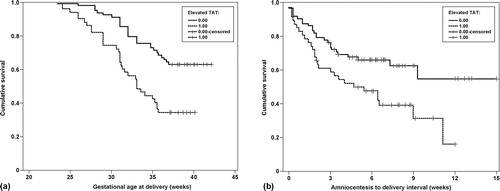
Table III. Cox proportional hazards survival analysis in the prediction of amniocentesis-to-delivery interval.